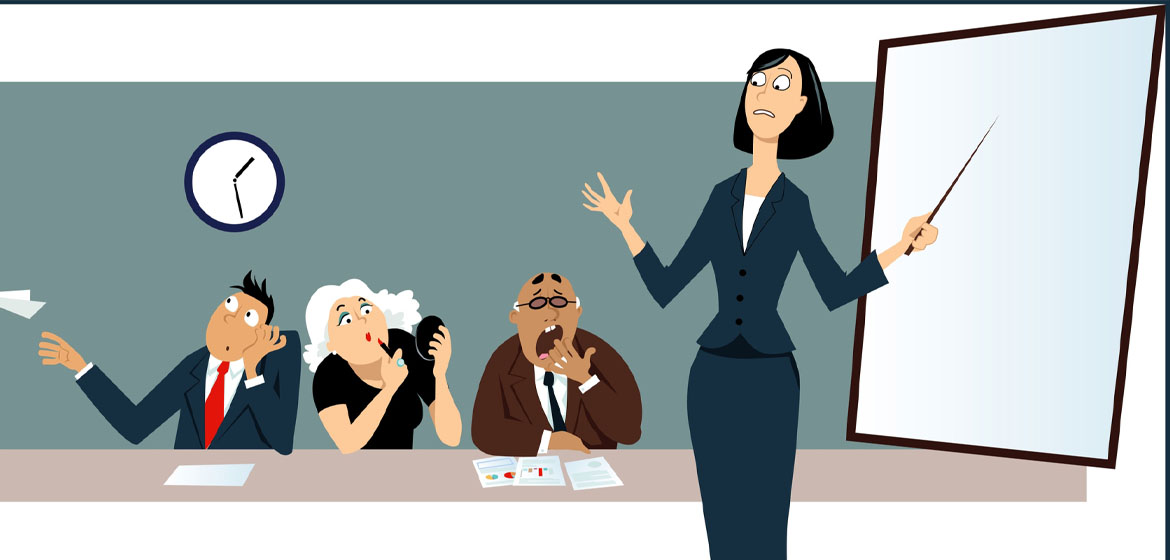How many times have you left a presentation saying to yourself, “Wow that was great. I wish ...
How many times have you left a presentation saying to yourself, “Wow that was great. I wish I could do that! Why can’t I be that good?”
During these two articles, you will find precise instructions to direct you along the path to presentation excellence. On the first article we looked at how to communicate our message with impact by incorporating in our presentation four powerful gestures while avoiding the fifth one which is weaker.

In this article we will find an easy way to structure any presentation using a system that makes it understandable to a broadest percentage of the population
The 4MAT system comes from a study of learning styles by Bernice McCarthy. She noticed that when she was teaching children in school, they learned in different ways. In particular, they learned by asking specific questions. She put the children into four basic categories, according to their particular mindset, as follows:
Some children wanted reasons. They were habitually asking the question WHY?
Others wanted facts. They would be asking for information, the WHAT?
Others would be very pragmatic. They wanted to do things, to find out HOW things worked
The remainder wanted to explore future consequences. They were more interested in the WHAT IF?

Back in the 1970s, Bernice realised that most of the material the children were being given at school fitted into just one of those questions: the WHAT? -facts, information, data. Think back when you were a kid for a moment. Most formal teaching was presented to you as information about things, about people, about the world. Formal education concentrates on the WHAT? category. This works fine for those who have that particular learning style. But it doesn’t work so well for those in the other three categories.
As adults we maintain our preferred learning style, so we will find one particular style is the most comfortable for our way of working.
According to a study, the percentages of people in the general population falling into each category are shown in the table.
However, in any selected group, such as managers, sales people, accountants, scientists, sports people, and so on, there will usually be a bias toward one particular category of learning style. The challenge for you is that most accountants prefer the WHAT style. This means they like giving a lot of facts, data and information. There is no problem for this if you are giving a presentation to other colleagues who are accountants themselves. However, when you present information to your client who is not an accountant then you run the risk of the client feeling confused or bored!
The four different styles of learning
The Why? group learn best by discussing the reasons why. They want to know why something is worth doing: “Why would we need to know this stuff? Why bother to use it?” They like to explore the reasons for taking action before actually doing so.
The What? group learn best when you give them the information either orally or on a printed page. In presentations and trainings the WHAT people are happiest when there is so much information, and they are frantically making notes, but they can’t write fast enough to keep up! Their criterion of a good training is: “Plenty of handouts!” and masses of facts, figures, and statistics. The value of the training for them lies in the thickness of the manual!
The How? people learn best by doing. They aren’t too bothered about the theory, or the reasons. They want to be trying things out, getting the feel -the hands-on approach. For example, when these people first get their hands on a computer, they spend no time reading the manuals. They just start clicking on anything to see what happens. As a trainer/presenter, you have a coaching role. Get them to do something, give them feedback on what they did, and then coach them on what they could be doing better.
The What if? people learn best through self-discovery. When they go off to do a training exercise, and you then observe them doing it, it may bear no resemblance to what you asked them to do. They may have changed bits of the exercise around or they may be doing something completely different, because they go into the exercise thinking “I wonder what would happen if we just leave that step out?” “It would be interesting to see what happens if we did this the other way.” “What would happen if we put this extra step in, or if we combined this with that other exercise?” In general these people will be considering the consequences of making changes to the structure of the exercise, the consequences of doing it in another context, and any possible repercussions on themselves through not sticking to the rules. It is almost as if they are testing the boundaries: finding out where they are, where they could go and what is possible.
In any presentation or training you need to ensure that you give the information in a way that is suitable for all four learning styles. And you need to do this in a particular order:
1. Start with the whys, because until you give reasons, the why people won’t listen to the rest of the information. In a training, they won’t be motivated to do the exercises, and they certainly won’t contemplate the what ifs. It is as though they are ‘on hold’ until they have good reasons for engaging. Therefore always give the whys first.
2. Then give some what information. Obviously people need details before doing an exercise, or thinking about how they might use something.
3. Third, do the how. In a training, this is an exercise; in a presentation it might be talking them through how they could implement this information back in their own environment or workplace.
4. Last, you need to look at the consequences: What would happen if you did this? What would happen if you didn’t? What is likely to happen if you deviate from the plan? And so on.
In every training you are taking people through this cycle many times. Doing this means that you are also having them experience all four ways of learning -which everyone has anyway -so that every person in the group, no matter what their preferred learning style is, has been satisfied.
The entire process is of course great in theory and you have to start putting these into practice. In my Presentation with Ease and Elegance! workshops, I put participants into the test by having them design a small presentation using the tools discussed in these two articles and I give them valuable feedback and coaching.

People assimilate information in different ways. Basically there are four different learning styles, and people will be asking these four questions, whether they are consciously aware of it or not. Every person will have a particular preference for one of these questions. That is what this is all about. Think about how you can use this structure in your presentations so that you answer those questions before they are asked. Consider how the people in your audience can use this information, and how it may be implemented in their particular context. What would be the best way of presenting the information so that when they have it, they will be able to use it for themselves?
Be different, be unique, put all these into practice and soon you will be having people say “Wow, that was a great presentation. I wish I could do that! Why can’t I be that good?”



